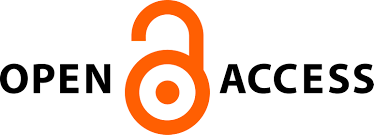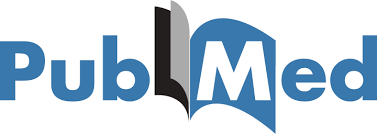The Peculiarities of Human Resource Information Management Problems and Solutions
##plugins.themes.bootstrap3.article.main##
Abstract
The current article explores one of the traditional management functional areas of enterprises—human resources management and its multi-component information environments, components. The traditional enterprises, usually manufacturing-oriented enterprises, controlled according to the functions of the activity, when many operating divisions is specialized in carrying out some certain tasks, functions (i.e. every department or unit is focused on the specific information technology applications which are not integrated). But quick changes in the modern activity environment fosters enterprises to switch from the classical functional management approaches (i.e. non-effective databases that are of marginal use, duplicative of one another, and operational systems that cannot adequately provide important information for enterprise control) towards more adaptive, contemporary information processing models, knowledge-based enterprises, process management (i.e. a computer-aided knowledge bases, automatic information exchange, structured and metadata-oriented way). As mentioned above, are the databases now really becoming increasingly unmanageable, non-effective? Slow information processing not only costs money, but also endangers competitiveness and makes users unhappy. However, it should be noted that every functional area, group of users of the enterprise, have their specific, purpose, subjects and management structure, otherwise they have different information needs, requirements. Therefore, organizational information systems need be constantly maintained and applied to their surroundings.
This article presents and critically analyzes the theoretical, practical aspects of the human resources or employee and information management, i.e. the first introduces 1) the major problems of information management (e.g., data integration and interoperability of systems, why business users often don’t have direct access to the important business data); 2) the process of formation, generation of the business process, business information flows and information structure (information system) and its development; and finally examines 3) the possible changes in the information infrastructure of the human resource development sector—presenting a general framework of an enterprise’s human resource information system, based on the meta-data management model and the usage associated with it (e.g., discovery, extraction, acquisition, distribution). Nowadays, human resources management is being renewed in enterprises and becoming one of the fundamental functions of activity management. Unfortunately, most business and industrial enterprises in the country often lack the capacity to effectively manage (identify, collect, store, manage) its real information resources, and lack the ability to perform systems analysis, modelling, re-building or re-engineering of legacy applications, activity processes.
This article presents several relatively simple, practical, but effective techniques (specific adaptations of technologies) that allow an increase in the effectiveness of the information systems; continually improving, reviewing, controlling the existing data in the databases, the human resource management and business (work) processes quality, such as: a reflective cycle for information system development, business information problem solving; enterprise knowledge or experience bases, meta-data management model.
This article presents and critically analyzes the theoretical, practical aspects of the human resources or employee and information management, i.e. the first introduces 1) the major problems of information management (e.g., data integration and interoperability of systems, why business users often don’t have direct access to the important business data); 2) the process of formation, generation of the business process, business information flows and information structure (information system) and its development; and finally examines 3) the possible changes in the information infrastructure of the human resource development sector—presenting a general framework of an enterprise’s human resource information system, based on the meta-data management model and the usage associated with it (e.g., discovery, extraction, acquisition, distribution). Nowadays, human resources management is being renewed in enterprises and becoming one of the fundamental functions of activity management. Unfortunately, most business and industrial enterprises in the country often lack the capacity to effectively manage (identify, collect, store, manage) its real information resources, and lack the ability to perform systems analysis, modelling, re-building or re-engineering of legacy applications, activity processes.
This article presents several relatively simple, practical, but effective techniques (specific adaptations of technologies) that allow an increase in the effectiveness of the information systems; continually improving, reviewing, controlling the existing data in the databases, the human resource management and business (work) processes quality, such as: a reflective cycle for information system development, business information problem solving; enterprise knowledge or experience bases, meta-data management model.
##plugins.themes.bootstrap3.article.details##
Section
Articles
- The Author grants to the Publisher the exclusive right and licence to publish this Article without remuneration until the expiry of the economic rights: to reproduce the article in print and digital form, including its publication; to disseminate the original version of the Article or its copies in Lithuania and foreign countries; to translate the Article; to publish the article, including making it publicly available via computer networks; to reproduce and publish the Article in Lithuanian and foreign databases; to licence usage of the Article in ways described in this paragraph.
- The Author warrants that the economic rights of the Author have not been assigned or granted to third parties, that the Article has not been published so far and is not under consideration of being published elsewhere.
- The Author warrants that the Article does not violate intellectual property rights of others.
- After the Article is published in Social Technologies the Author shall have a right to make it public on personal website or on a website of an institution of affiliation, to reproduce it for non-commercial teaching or scholarly research purposes, clearly indicating that the primary source of its publication is Social Technologies.
- This consent shall be considered invalid if the Editorial Board of the Social Technologies decides not to publish the Article.
Authors contributing to Social Technologies agree to publish their articles under a Creative Commons Attribution 3.0 Unported (CC BY 3.0) Licence, allowing third parties to share their work (copy, distribute, transmit) and to adapt it, under the condition that the authors are given credit, and that in the event of reuse or distribution, the terms of this licence are made clear.







